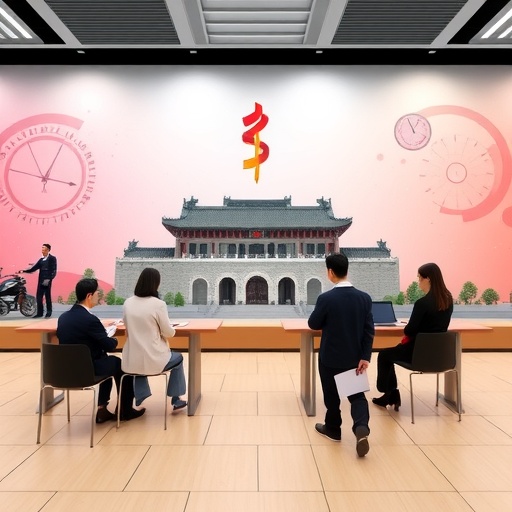In the dynamic realm of academia and industry, technology transfer has emerged as a pivotal focus, blurring the lines between research and its practical applications. The university’s role in fostering innovation through effective technology transfer mechanisms is not only a driving force behind economic growth but also a transformative enabler for societal progress. A recent study by Huang, Zhang, and Xu sheds light on the configurations that enhance high-level university technology transfer in China, marking a significant contribution to this field of research.
As universities increasingly serve as breeding grounds for innovation, understanding the intricate pathways of technology transfer becomes essential. The authors posit that several configurations play a crucial role in facilitating this process, ranging from institutional frameworks to collaborative efforts between universities and industries. Their findings provide valuable insights for universities intent on optimizing their technology transfer initiatives. The research underscores that the strategic alignment of a university’s resources with external partner objectives can lead to accelerated innovation cycles and higher levels of technology commercialization.
The essence of the study is rooted in the examination of various configurations that propel high-level technology transfer, delving into aspects such as governance structures, funding mechanisms, and the role of intellectual property management. It becomes clear that a defined governance structure can significantly streamline decision-making processes, consequently enhancing the speed and efficiency of technology transfer. Furthermore, the authors emphasize the necessity for universities to adopt a proactive stance regarding their funding strategies to support collaborative projects which can yield mutual benefits.
Collaboration emerges as a central theme in the research findings. Universities that actively engage with industry partners, government agencies, and research institutions are better positioned to convert their research findings into commercial products and services. The collaborative nature of such relationships not only enhances knowledge exchange but also fosters an environment conducive to innovation. The study highlights specific cases where successful collaborations have led to significant technological advancements, ultimately benefiting both the university and the partnering organizations.
Intellectual property management is another crucial angle explored in this research. The authors argue that effective management of intellectual property rights is paramount in ensuring that innovations developed within universities are adequately protected and can be appropriately monetized. By safeguarding their intellectual assets, universities enhance their bargaining power when establishing partnerships with industry players. This creates a symbiotic relationship where both parties can reap the benefits of shared knowledge and resources.
Moreover, the research points out the importance of cultivating a culture of innovation within universities. This culture not only motivates researchers to pursue market-oriented projects but also encourages them to think beyond traditional academic boundaries. By fostering an entrepreneurial spirit, universities can pave the way for the commercialization of research findings. The authors draw attention to initiatives that have successfully integrated entrepreneurship education into their curricula, illustrating how these programs can inspire a new generation of innovators.
The paper also presents empirical data gathered from a range of Chinese universities, providing a comprehensive view of the current landscape of technology transfer practices. This data analysis reveals that while some institutions have made remarkable progress, others lag due to inadequate infrastructures or insufficient support systems. These disparities highlight the pressing need for a cohesive national strategy that aligns university objectives with broader economic goals, ultimately enhancing technology transfer across the educational spectrum.
As the research progresses, the authors underscore the vital role of government policy in shaping the environment for technology transfer. Legislative frameworks that support innovation ecosystems can significantly impact the effectiveness of university-industry collaborations. The authors advocate for policies that are not only favorable but also adaptive to changing technological landscapes, ensuring that universities remain at the forefront of research and development.
In engaging with potential stakeholders, the researchers also explore the growing trend of public-private partnerships in technology transfer. These partnerships serve as a bridge, connecting the theoretical insights generated within universities with the practical applications sought by industries. By encouraging joint ventures and shared investment in research, universities can harness additional resources, ultimately accelerating the commercialization of their innovations.
The implications of this study extend beyond academia, impacting policymakers and industry leaders alike. The insights provided by Huang, Zhang, and Xu offer a roadmap for enhancing technology transfer practices, emphasizing the need for strategic alliances and coordinated efforts. As universities continue to evolve into key players in the innovation process, their ability to efficiently transfer technology will shape the future landscape of research, development, and economic growth.
In conclusion, the research presented by Huang, Zhang, and Xu not only clarifies the configurations that promote high-level university technology transfer in China but also sets a precedent for future studies in the field. It calls for an integrated approach that combines strategic planning, effective governance, and a commitment to fostering collaborative environments. As we move toward an increasingly competitive global landscape, the findings of this study could prove essential for universities aiming to enhance their impact on innovation and technology transfer.
With the shifts in global economies and technology landscapes, the ability for universities to adapt and optimize their technology transfer processes stands as a testament to their value in society. The ongoing collaboration between academia and industry is not merely a convergence of interests but a necessity that promises to yield innovations which can address some of the pressing challenges faced by humanity today.
Subject of Research: University Technology Transfer in China
Article Title: Which configurations promote the high-level university technology transfer? Evidence from China.
Article References:
Huang, Y., Zhang, J. & Xu, Y. Which configurations promote the high-level university technology transfer? Evidence from China.
High Educ (2025). https://doi.org/10.1007/s10734-025-01513-0
Image Credits: AI Generated
DOI:
Keywords: University Technology Transfer, Innovation, Collaboration, Intellectual Property Management, Public-Private Partnerships, Economic Growth.




